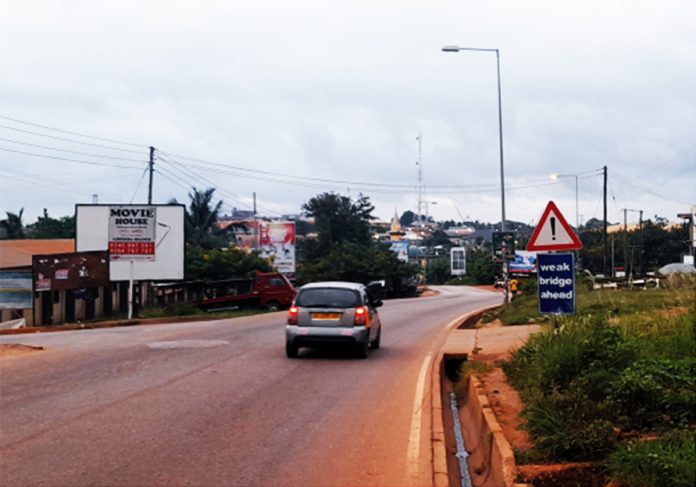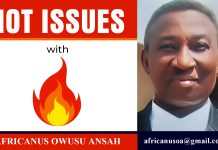Dr NK Nsiah-Achampong and Dr J Damere-Dery
Road Signs
Advisedly, in Ghana, motorists ought to be wary and suspicious of road signs, and drive instinctively, with wisdom. The call by road safety authorities for motorists to obey road signs leaves much to be desired, given the impending situation where even standard road signs can be misleading. In Ghana, road signs are a mixture of standard and non-standard, making it difficult for motorists to distinguish between them in the brevity of time at the motorist’s disposal.
Motorists have had the unpleasant ordeal of conforming to road signs whose content is variant to the road. The upshot, because intangible and not proximately precipitative, does not move safety authorities to relate its potential danger to road safety. The motorist is a biological organism. Just as all biological organisms respond to stimuli in their environment, so does the motorist respond to stimuli in the traffic environment and behaves accordingly. Some road signs are also deficient in retro-reflectivity, physical damage, or are turned off direct motorist gaze, all of which elicit inaccurate information processing by the sense of sight to the brain. This is purely a biological process precipitant to culminating in an infringement.
Not all motorist offences are directly motorist-causative. Some are indirectly elicited by non-motorist action. Some motorist actions which turn offensive could be resultant of a frequency of behaviour performed in the past and translates into conditioned automaticity. This has an added propensity of creating an adverse psycho-emotional effect on the motorist.
Cases
A few cases in Kumasi are referred to. At the Kaase bridge, is the road sign ‘weak bridge ahead’, mounted when the Kaase timber bridge was under rehabilitation in 2016. About eight years after, the road sign still remains. During observation, two loaded heavy goods vehicles tried to make a turn-around, apparently on sighting the road sign, until on-lookers alerted the motorists otherwise. Or, is the bridge really weak? If it is, what is expected of the motorist?
On the Boadi – Tech stretch of the Accra – Kumasi road is the ‘TRAFFIC LIGHT AHEAD’ sign. In the Standard Details. Road Signs and Markings for Urban and Trunk Roads, issued by the Ministry of Roads and Highways, 1991; does the text information stated in MRH/SM/11, mean same as ‘TRAFFIC LIGHT AHEAD’? In the any case, elements in the ‘TRAFFIC LIGHT AHEAD’ sign do not conform to the standards stated in MRH/SM/11 and MRH/SM/12.
Road signs in corporate institutions are worse deviants of standards. On campus KNUST, there are road signs which do not conform to the road nature. On the UPK to Continental Hall junction are three road signs which do not conform to standards. Others are non-standard work zone signs including a certain ‘Follow Up’ sign, with unconventional traffic colours, which we have seen in operation for more than three decades. At the School of Graduate Studies is a road sign with discordant colours (red on blue), belligerent to the sense of sight.
Research
In the book Towards Safer Roads in Developing Countries. A Guide for Planners and Engineers, published in 1991, the Transport and Road Research Laboratory & Overseas Development Administration, explain on page 152, that:
“drivers should not suddenly be faced with unusual or unique circumstances which do not conform with their expectations. If they do meet such situations, then many will take longer to react, and some react inappropriately or not at all and hence become involved in an accident.”
This is not unknown to Engineers and road safety authorities in Ghana. The question then is why, or what do we do with our knowledge or research findings?
The Kaase bridge, Kumasi, exhibiting the ‘weak bridge ahead’ road sign
Conclusion
It is obvious that, in Ghana, when road nature changes, corresponding road signs remain unchanged. Road signs are rarely analyzed beyond a superficial level. Safety auditing, as claimed by road safety agencies, is rarely done. The motorist, in some instances, receive penalty for some traffic offences indirectly caused by other parties. Who checks road safety agencies for negligence? Who cares about the plight of the motorist?
Dr NK Nsiah-Achampong and Dr J Damere-Dery
1Senior Research Scientist / Ag PRO, 2Principal Research Scientist
(CSIR – Building and Road Research Institute)
n.nsiah@inorbit.com; 0249510884









